“Creating A Beautiful Garden With Passion Fruit Vines”
Introduction

What is a Passion Fruit Vine?
The passion fruit vine is a climbing plant from the Passifloraceae family. It is known for its fruits and stunning flowers. The passion fruit vine transforms gardens, orchards, and landscapes with foliage and blossoms.
Origin and Significance
The passion fruit vine is native to the regions of Brazil, Paraguay, and Argentina. They have a history dating back to indigenous cultures. These cultures appreciated the fruit’s flavor and used the plant for medicinal purposes. The passion fruit has spread to tropical and subtropical regions worldwide. It has become a crop in Hawaii, Australia, New Zealand, and Africa.
Why Passion Fruit Vines are Unique and Worth Growing
Passion fruit vines offer many reasons to cultivate them:
- Aesthetic Appeal: The plants produce extraordinary flowers in the plant kingdom. Large blossoms featuring white and purple petals. The corona creates a visual display that attracts bees and butterflies.
- Dual-Purpose Cultivation: Passion fruit vines provide a harvest of delicious, nutrient-dense fruits. A single vine can produce dozens of fruits per season. It is an excellent choice for home and small-scale farming.
- Versatile Fruit Usage: The fruit is used for juices, cocktails, and savory dishes. Their tangy-sweet flavor adds excitement to culinary creations.
- Ecological Benefits: Passion fruit vines support biodiversity. Their dense foliage provides habitat and shelter for beneficial insects and small wildlife.
- Low Maintenance: Passion fruit vines are easy to grow. They thrive in various settings, from backyard gardens to commercial plantations.
Botanical Basics of Passion Fruit Vine
Understanding the Passion Fruit Plant
Scientific Classification
- Kingdom: Plantae
- Order: Malpighiales
- Family: Passifloraceae
- Genus: Passiflora
- Primary Species: P. edulis (most cultivated)
Physical Characteristics and Growth Patterns
- Vine Structure
- Climbing vines that grow 15-20 feet per year
- Woody stem at base becoming herbaceous toward the growing tips
- Strong tendrils that aid in climbing and attachment to support structures
- Can spread 5-10 feet wide when supported
- Foliage
- Dark green, glossy leaves
- Three-lobed leaf structure, 3-8 inches long
- Alternating leaf patterns along the vine
- Evergreen in tropical climates, deciduous in cooler regions
- Flowers
- Large blooms measuring 2-3 inches in diameter
- Corona of purple and white filaments
- Five petals and five sepals
- Flowers last only 24 hours
- Blooming occurs in spring and summer
- Self-fertile in some varieties, others need cross-pollination
- Fruit Development
- Fruits develop from pollinated flowers
- Oval or round shape, 1.5-3 inches in diameter
- Green when immature, turning purple or yellow at ripeness
- Waxy rind protecting pulp and seeds
- Interior contains small, black seeds surrounded by aromatic pulp
- 60-80 days from flower to ripe fruit
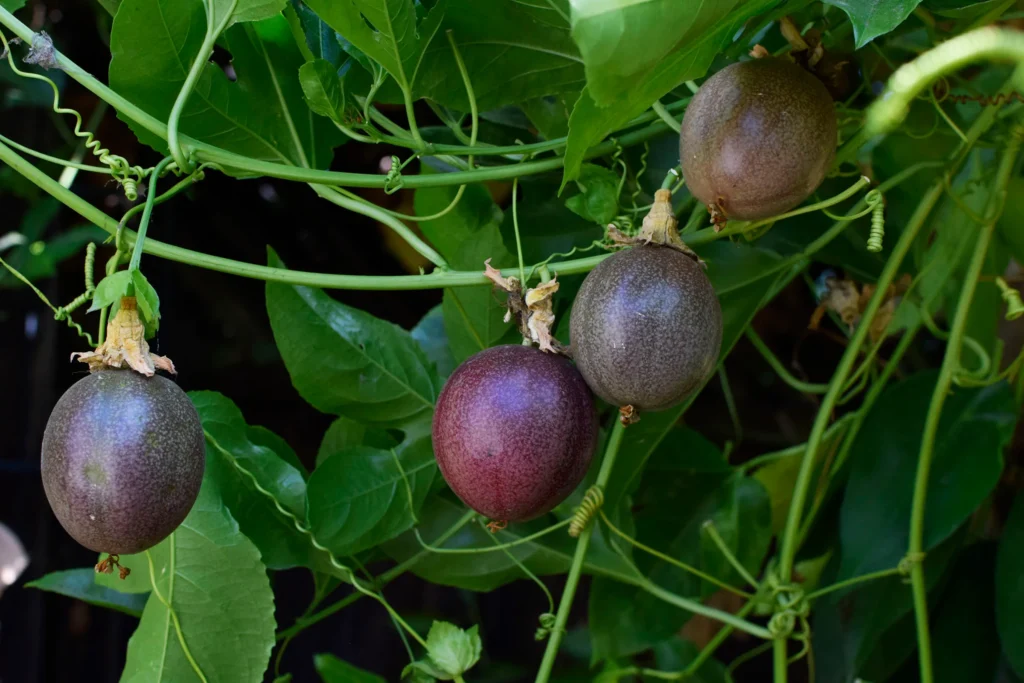
Different Varieties of Passion Fruit Vines
Purple Passion Fruit (P. edulis f. edulis)
- Fruit with deep purple skin
- More cold-tolerant than yellow varieties
- Intense flavor and higher acid content
- Popular in home gardens and commercial production
Yellow Passion Fruit (P. edulis f. flavicarpa)
- Larger fruit with yellow skin
- More tropical
- Higher juice content
- Preferred for juice production
Sweet Granadilla (P. ligularis)
- Orange-brown fruit with a soft shell
- Sweeter taste than purple or yellow varieties
- Popular in highland tropical regions
Giant Granadilla (P. quadrangularis)
- Largest passion fruit variety
- Green-yellow skin when ripe
- Mild flavor
- Used as a vegetable when immature
Native Regions and Global Distribution
- Original Habitat
- Native to Brazil through Paraguay to Argentina
- Natural growth in tropical and subtropical rainforest margins
- Current Distribution
- Major commercial production in:
- South America (Brazil, Colombia, Peru)
- Australia and New Zealand
- Hawaii and other Pacific Islands
- East Africa (Kenya, Uganda)
- Southeast Asia
- India
- Cultivation Zones
- Primary growing regions between 20°N and 20°S latitude
- Successfully grown in protected areas up to 30°N and 30°S
- Altitude range from sea level to 3,000 feet in tropical regions
- Grown in greenhouses in temperate climates
Passion fruit vines are well-suited for both ornamental and productive purposes. Understanding these basics is important for cultivation.
Growing Conditions for Passion Fruit Vine

Ideal Environmental Requirements
Sunlight Needs
- Full sun (6-8 hours daily) for growth and fruit production
- Partial shade may reduce flowering and fruiting
- Morning sun with afternoon shade is needed in extremely hot climates
- Protection from strong winds
Soil Requirements
- Soil Type
- Well-draining, loamy soil
- Sandy loam to clay loam textures
- Good organic matter content (5-7%)
- Avoid heavy clay or waterlogged soils
- Soil pH
- Optimal range: 6.0-6.5
- Tolerates: 5.5-7.0
- Regular pH testing
- Lime or sulfur amendments as needed
- Drainage
- Excellent drainage essential
- Raised beds are recommended for poor drainage
- Minimum soil depth of 24 inches
- No standing water within the root zone
Temperature and Humidity
- Temperature Range
- Optimal growing temperature: 68-82°F (20-28°C)
- Minimum temperature: 32°F (0°C)
- Maximum temperature: 85-90°F (29-32°C)
- Frost protection needed below 32°F
- Humidity Requirements
- Moderate to high humidity (60-80%)
- Regular misting is beneficial in dry climates
- Good air circulation
- Humidity management in greenhouses
Hardiness Zones
- USDA zones 9-11 for outdoor year-round growth
- Zone 8 with winter protection
- Zones 4-7 as annual or container plant
- Greenhouse cultivation in all zones
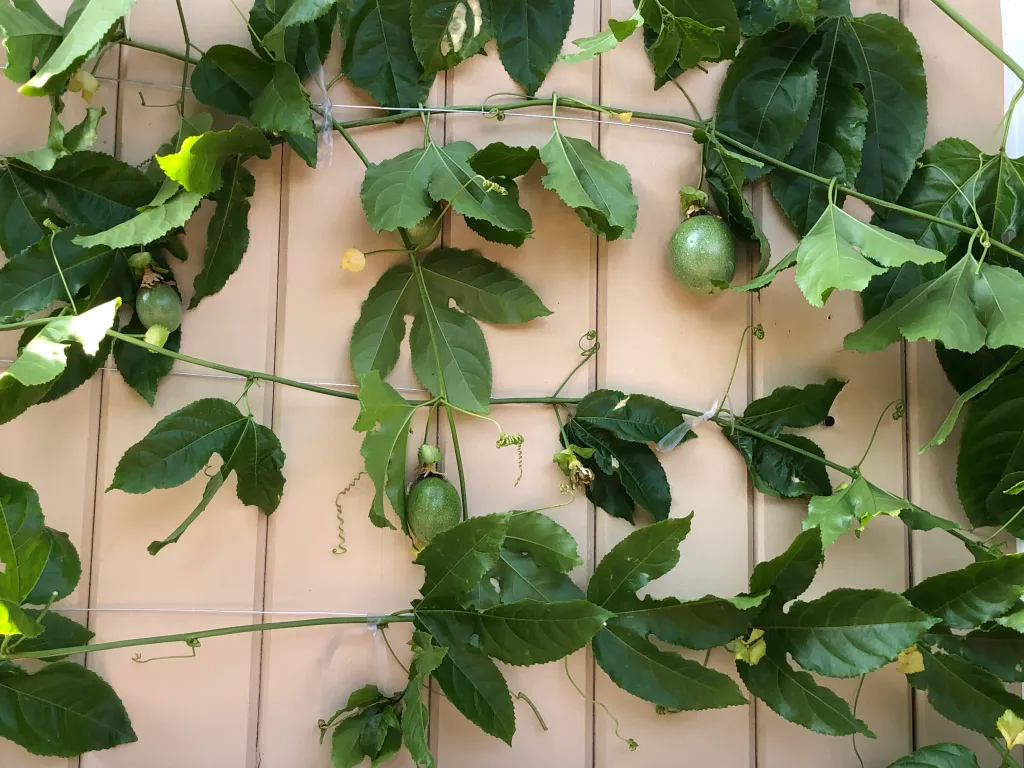
Planting and Propagation
Starting Passion Fruit Vines
- Seed Propagation
- Fresh seeds germinate best (within 2-3 weeks of harvest)
- Soak seeds 24 hours before planting
- Plant 1/4 inch deep in sterile medium
- Germination temperature: 70-75°F (21-24°C)
- Germination time: 10-20 days
- Keep soil moist
- Cutting Propagation
- Semi-hardwood cuttings 6-8 inches long
- Take cuttings below a node
- Remove lower leaves
- Dip in rooting hormone
- Plant in a sterile, well-draining medium
- Maintain high humidity
- Rooting time: 4-8 weeks
Planting Guidelines
- Timing
- Spring planting ideal
- Early summer in mild climates
- Fall planting is possible in frost-free areas
- Allow 4-6 weeks before the first frost
- Spacing
- 8-10 feet between plants
- 12-15 feet between rows
- Adjust based on the trellis system
- Consider mature size
- Planting Process
- Prepare a hole twice the width of the root ball
- Incorporate organic matter
- Plant at the same depth as the nursery container
- Water thoroughly
- Add mulch layer
- Install a support structure at the planting
Container vs. Ground Planting
- Container Growing
- Minimum 15-20 gallon container
- Excellent drainage essential
- High-quality potting mix
- Regular feeding required
- Mobile for weather protection
- Suitable for small spaces
- Ground Planting
- Better for long-term growth
- More extensive root development
- Higher fruit production
- Permanent location needed
- Requires more space
- Better drought tolerance
- Support Structures
- A strong trellis system is required
- Options include:
- T-post and wire systems
- Pergolas
- Fence panels
- Agricultural trellis systems
- Must support 30-50 pounds per vine
- Height: 6-8 feet minimum
- Width: 4-6 feet minimum
Growing conditions and planting methods form the foundation for passion fruit vine cultivation.
IV. Passion Fruit Vine Care and Maintenance
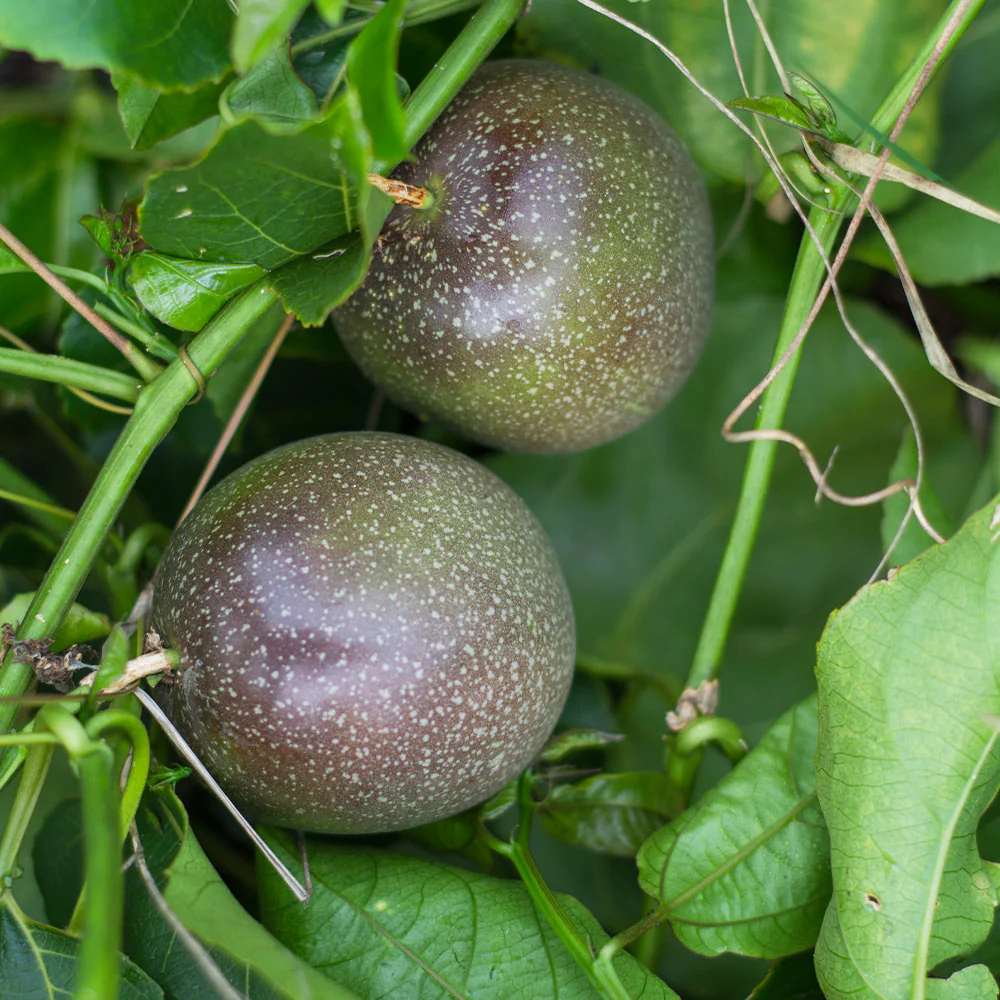
Watering and Fertilization
Watering Requirements
- Watering Schedule
- Weekly watering for established plants
- Frequent watering for young vines
- 1-2 inches of water per week
- Adjust based on:
- Climate conditions
- Soil type
- Season
- Plant maturity
- Irrigation Methods
- Drip irrigation
- Soaker hoses
- Avoid overhead watering
- Morning watering recommended
- Maintain consistent moisture
- Special Considerations
- Increase water during flowering and fruiting
- Reduce winter dormancy
- Check soil moisture regularly
- Watch for signs of water stress:
- Wilting leaves
- Yellow leaves
- Flower drop
- Fruit drop
Fertilization Program
- Nutrient Requirements
- High nitrogen during the growth phase
- Balanced NPK during flowering
- Higher potassium during fruiting
- Secondary nutrients:
- Calcium
- Magnesium
- Sulfur
- Fertilizer Schedule
- Initial feeding at planting
- Monthly applications during the growing season
- Reduce during dormancy
- Annual schedule:
- Spring: 10-5-20 NPK
- Summer: 5-5-20 NPK
- Fall: 0-10-20 NPK
- Winter: Minimal or none
- Application Methods
- Granular fertilizer around the drip line
- Liquid fertilizer for quick uptake
- Foliar feeding for micronutrients
- Organic options:
- Compost
- Well-rotted manure
- Fish emulsion
- Seaweed extract
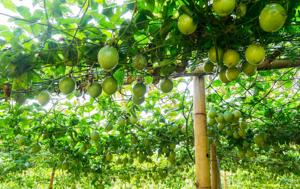
Pruning and Training
Pruning Techniques
- Basic Pruning Rules
- Remove dead or diseased growth
- Thin overcrowded areas
- Cut back after fruiting
- Maintain airflow
- Control size and shape
- Seasonal Pruning
- Spring: Major cleanup
- Summer: Light maintenance
- Fall: Prepare for winter
- Winter: Minimal in cold regions
- Specific Cuts
- Heading cuts for bushiness
- Thinning cuts for air circulation
- Removal of:
- Crossing branches
- Weak growth
- Non-producing vines
- Suckers
Growth Monitoring
- Regular Inspection
- Leaf color and health
- Stem strength
- Root zone condition
- Flower production
- Fruit development
- Growth Indicators
- Terminal growth rate
- Leaf size
- Flower quantity
- Fruit set percentage
- Vigor
- Record Keeping
- Planting dates
- Fertilizer applications
- Pruning activities
- Harvest data
- Problem occurrences
V. Common Challenges in Growing Passion Fruit Vines
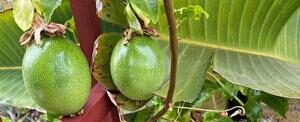
Pest Management
Common Pests
- Fruit Flies
- Mediterranean fruit fly
- Oriental fruit fly
- Signs of infestation:
- Tiny puncture marks on the fruit
- Premature fruit drop
- Larvae in fruit
- Control methods:
- Fruit bagging
- Pheromone traps
- Regular harvesting
- Disposal of fallen fruit
- Spider Mites
- Red spider mites
- Two-spotted spider mites
- Symptoms:
- Stippled leaves
- Webbing on leaves
- Yellowing foliage
- Leaf drop
- Control:
- Predatory mites
- Insecticidal soap
- Neem oil
- Proper humidity
- Scale Insects
- Soft scale
- Armored scale
- Identification:
- Small bumps on stems
- Sticky honeydew
- Black sooty mold
- Treatment:
- Horticultural oil
- Systemic insecticides
- Manual removal
- Natural predators
- Nematodes
- Root-knot nematodes
- Signs:
- Stunted growth
- Yellowing leaves
- Root galls
- Poor fruit production
- Management:
- Resistant rootstocks
- Soil solarization
- Organic amendments
- Crop rotation
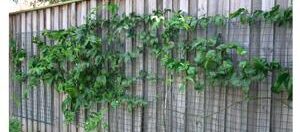
Disease Prevention
Common Diseases
- Fungal Diseases
a) Fusarium Wilt
- Symptoms:
- Yellowing leaves
- Wilting
- Stem discoloration
- Plant death
- Prevention:
- Resistant varieties
- Clean tools
- Proper drainage
- Fungicide treatment
b) Alternaria Spot
- Signs:
- Brown leaf spots
- Fruit lesions
- Defoliation
- Control:
- Proper spacing
- Good air circulation
- Fungicide sprays
- Remove infected parts
- Viral Diseases
a) Passion Fruit Woodiness Virus
- Symptoms:
- Woodiness in fruit
- Deformed leaves
- Reduced yield
- Stunted growth
- Management:
- Virus-free planting material
- Aphid control
- Remove infected plants
- Clean tools
b) Cucumber Mosaic Virus
- Signs:
- Mottled leaves
- Stunted growth
- Reduced flowering
- Poor fruit set
- Control:
- Weed control
- Insect management
- Remove infected plants
- Sanitize equipment
VI. Harvesting and Post-Harvest Care
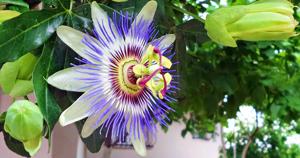
Harvesting Guidelines
Determining Ripeness
- Visual Indicators
- Color change (variety dependent)
- Purple varieties: Deep purple
- Yellow varieties: Golden yellow
- No green tints remaining
- Skin texture becomes wrinkled
- Fruit falls naturally
- Size reaches maximum
- Physical Signs
- Slight give when gently squeezed
- Heavy for size
- Develops aroma
- Smooth, waxy surface
- Timing Considerations
- 60-80 days from flowering
- Peak harvest seasons:
- Spring crop
- Fall crop
- Regional variations
- Weather impact
Harvesting Techniques
- Collection Methods
- Hand-picking from vine
- Gathering fallen fruit
- Using picking poles
- Collection baskets/nets
- Best Practices
- Handle gently
- Harvest during dry weather
- Use clean containers
- Keep fruits separate
- Avoid dropping/bruising
- Equipment Needed
- Picking bags/baskets
- Pruning shears
- Ladder (if necessary)
- Protective gear
- Sorting containers
Processing and Preservation
Fresh Usage
- Preparation
- Washing
- Drying
- Sorting
- Quality check
- Market Preparation
- Packaging
- Labeling
- Price marking
- Distribution
Processing Methods
- Juice Extraction
- Cut fruits in half
- Scoop out pulp
- Strain seeds
- Pasteurization
- Bottling
- Pulp Processing
- Separation from seeds
- Straining
- Packaging
- Freezing
- Storage
- Value-Added Products
- Jams and jellies
- Frozen pulp
- Concentrate
- Dried products
- Flavoring agents
Proper harvesting and post-harvest handling is important for maintaining fruit quality.
VII. Culinary Uses of Passion Fruit
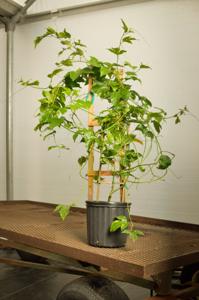
Nutritional Profile
Key Nutrients
- Vitamins
- Vitamin C: 30mg per 100g
- Vitamin A: 1272 IU per 100g
- B-complex vitamins
- Vitamin K
- Minerals
- Potassium
- Iron
- Magnesium
- Calcium
- Phosphorus
- Other Compounds
- Dietary fiber: 10.4g per 100g
- Antioxidants
- Flavonoids
- Polyphenols
Caloric Content
- Low calorie: 97 calories per 100g
- High water content
- Low fat
- Natural sugars
VIII. Medicinal and Health Benefits
Nutritional Components
Essential Nutrients
- Vitamins
- Vitamin C (antioxidant properties)
- Vitamin A (eye health)
- B-complex vitamins (metabolism)
- Vitamin K (blood clotting)
- Minerals
- Potassium (heart health)
- Iron (blood formation)
- Magnesium (nerve function)
- Zinc (immune support)
- Copper (collagen formation)
- Fiber Content
- Soluble fiber
- Insoluble fiber
- Pectin
- Benefits:
- Digestive health
- Blood sugar control
- Cholesterol management
- Weight management
Bioactive Compounds
- Antioxidants
- Flavonoids
- Polyphenols
- Carotenoids
- Benefits:
- Cell protection
- Anti-aging
- Disease prevention
- Immune support
- Plant Compounds
- Piceatannol
- Anthocyanins
- Beta-carotene
- Properties:
- Anti-inflammatory
- Antioxidant
- Cardiovascular support
- Cancer-fighting potential

Health Advantages
Physical Health Benefits
- Digestive Health
- Fiber content aids digestion
- Reduces constipation
- Promotes gut health
- Supports beneficial bacteria
- Cardiovascular Health
- Blood pressure regulation
- Cholesterol management
- Heart rhythm support
- Vessel flexibility
- Immune System Support
- Vitamin C boost
- Antioxidant protection
- Anti-inflammatory effects
- Infection resistance
- Blood Sugar Control
- Low glycemic index
- Fiber content
- Insulin sensitivity
- Blood sugar stability
Mental Health Benefits
- Stress Reduction
- Natural compounds
- Anxiety relief
- Mood enhancement
- Sleep quality
- Cognitive Function
- Antioxidant protection
- Brain health support
- Memory enhancement
- Focus improvement
Traditional Medicinal Uses
Historical Applications
- Indigenous Practices
- South American remedies
- Traditional medicine
- Cultural significance
- Historical documentation
- Traditional Preparations
- Teas and infusions
- Poultices
- Extracts
- Topical applications
Modern Applications
- Supplementation
- Capsules
- Extracts
- Powders
- Concentrates
- Therapeutic Uses
- Sleep aid
- Anxiety relief
- Digestive support
- Immune boosting
XI. Frequently Asked Questions

Growing Conditions
Q: How long does it take for passion fruit vines to produce fruit? A: Passion fruit vine begin producing fruit 12-18 months after planting. The time to first harvest varies based on:
- Growing conditions
- Variety planted
- Climate zone
- Full production is usually achieved by year 3.
Q: Can passion fruit grow in containers? A: Yes, passion fruit can grow in containers with considerations:
- Minimum 15-20 gallon pot size
- Excellent drainage
- Strong support structure
- Regular fertilization
- Proper pruning management
Q: What are the minimum temperature requirements? A: Passion fruit vines need:
- Minimum: 32°F (0°C)
- Optimal: 68-82°F (20-28°C)
- Protection needed below freezing
- Greenhouse options for cold climates
Common Problems
Q: Why are my passion fruit flowers dropping without producing fruit? A: Flower drop can be caused by:
- Poor pollination
- Temperature extremes
- Nutrient deficiencies
- Water stress
- Pest damage
Q: How do I know when passion fruits are ripe? A: Ripeness indicators include:
- Color change to purple or yellow (variety dependent)
- Slight wrinkling of the skin
- Fruit falls naturally
- Heavy feel
- Aromatic scent
Q: What causes fruit to be empty or have little pulp? A: Poor fruit fill can result from:
- Inadequate pollination
- Environmental stress
- Nutrient deficiencies
- Water stress
- Pest damage to developing fruit
Maintenance
Q: How often should the vines be pruned? A: Pruning schedule:
- Major pruning: After fruiting
- Maintenance pruning: Throughout the growing season
- Shape training: Early growth
- Dead/diseased material: As needed
- Winter cleanup: Before spring growth
Q: What is the best fertilizer schedule? A: Recommended fertilization:
- Young vines: Monthly, balanced NPK
- Flowering: Higher phosphorus
- Fruiting: Higher potassium
- Winter: Reduced feeding
- Organic options available
Harvesting and Storage
Q: How long do passion fruits last after picking? A: Storage duration varies by conditions:
- Room temperature: 3-7 days
- Refrigerated: 2-3 weeks
- Optimal storage: 45-50°F (7-10°C)
- Humidity: 85-90%
- Proper ventilation required
Q: Can passion fruit be frozen? A: Yes, passion fruit can be frozen:
- Whole pulp with seeds
- Strained juice
- Pulp in ice cube trays
- Up to 6 months of storage
- Maintain -0°F (-18°C)
XII. Conclusion
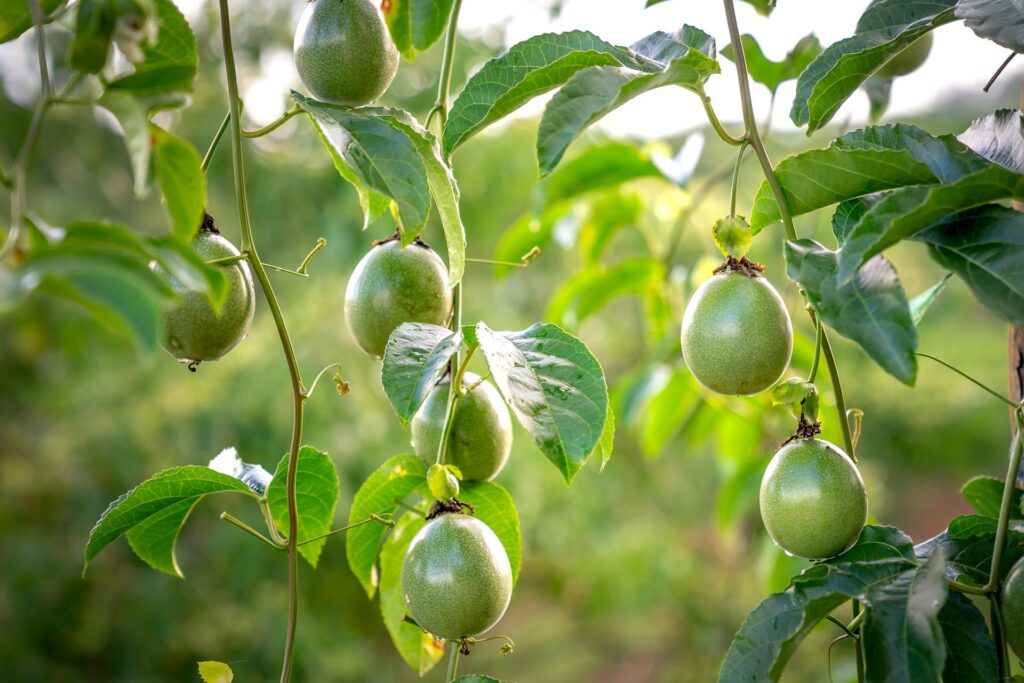
Key Takeaways
- Success Factors
- Proper site selection
- Quality plant material
- Strong support systems
- Regular maintenance
- Pest/disease management
- Economic Viability
- Market potential
- Scale considerations
- Value addition
- Risk management
- Investment returns
- Sustainability
- Environmental practices
- Resource conservation
- Social responsibility
- Long-term viability
- Adaptation strategies
Final Recommendations
- For New Growers
- Start small
- Learn basics
- Network with experts
- Plan carefully
- Check progress